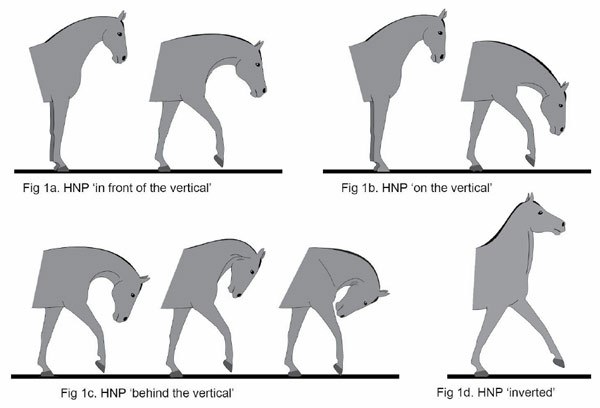
The equine neck and its function during locomotion (4)
The articles about The equine neck and its function during locomotion (1), The equine neck and its function during locomotion (2) and The equine neck and its function during locomotion (3) continue in this summary article.
7. The equine neck in relation to work
Horses with long necks are used for purposes where speed plays an important role, since its potential for faster and more balanced locomotion for example in thoroughbred racehorses.
7.1 General (English) riding and dressage
The desired head/neck positon of ridden dressage horses has been changing over the years. A recent study analysed and compared videos of competitions with dressage horses (Grand Prix level) over 25 years. The results showed that nowadays the head/neck position is more flexed than 25 years ago. The nose was behind the vertical in all situations, earlier on this was only present during collected trot and collected canter.
7.2 Show jumping
A study which investigated the relationship between the head and neck with the back, and limb characteristics during take-off, flight and landing found:
- Association between greater head/neck flexion at take-off, and decreased hock flexion and decreased neck/trunk angle on landing. Both not ideal for clearing large jumps.
- Association between greater head/neck flexion during; mid-flight, towards landing and at landing, and decreased carpal extension on landing. Which is not ideal for safe landing.
7. 3 Behavioural changes
The high number of studies towards head/neck positions and the different research set-ups, results, and especially interpretation of these results ask for a more standardised research approach in this area.
> Zsoldos et al., Zoology (2015). All rights reserved to 2015 Elsevier GmbH. Click here for the Pubmed summary


